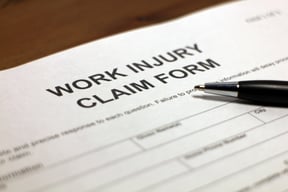 In July 2016, the new Work Comp rates for policies, effective October 1st, 2016, were released. Generally speaking, the rates went down by an average of 3.19%, which is great news.
In July 2016, the new Work Comp rates for policies, effective October 1st, 2016, were released. Generally speaking, the rates went down by an average of 3.19%, which is great news.
What is catching companies by surprise is the WCRB also increased the Split Point for the 4th year in a row. The new Split Point is going to be $16,000.
This is causing most Experience Modification Factors (EMR) to increase by 2 to 5 points before any other factors are input, i.e.: Payrolls and Losses.
Do you know what your projected EMR will be for your next renewal?
Do you know what the Spilt Point means and how if affects your EMR?
Please reach out if you would like to learn more about your EMR and how R&R's Professional Services manage this for customers.
- Home
- Business Insurance
- Industries
- Agriculture & Agribusiness
- Arts, Entertainment, & Recreation
- Auto and Franchise Dealers
- Camps and Retreats
- Child Care
- Construction
- Dental Practice
- Financial and Professional Services
- Fitness
- Food & Beverage
- Gas & Oil Distribution
- Healthcare & Social Services
- Hospitality, Media and Entertainment
- Lumber / Wood Products
- Manufacturing and Industrial Services
- Public and Private Education
- Public Entity / Municipalities
- Real Estate
- Retail
- Small Business
- Technology & Cyber Security
- Temporary Staffing
- Tree Care & Arborists
- Trucking, Transportation, & Warehousing
- Veterinarian & Animal Care
- Benefits
- Financial Services
- Bonds
- Personal Insurance
- Medicare
- Resources
- About Us
- Careers
- Blog
- Employee Directory



